
The Old Town Square (Staroměstské náměstí) is one of the oldest, main, most visited and beautiful squares in Prague, the ensemble of which is formed by buildings of different architectural styles.
The Old Town Square as a whole acts as the historical core of the city of Prague and is located in the very center of the Old Town (Staré Město).
By location, the Old Town Square is also called the Old Town Square.
The area is included in the list the main sights of Prague.

This is the main square of the Old Place, which has been formed since the 10th century as a market at the intersection of trade routes.
During the history of the square changed its names, rebuilt and increased. They also changed the appearance and structure around the square, which were originally built in their abundance from the 12th to 13th centuries. In the 14th century, a town hall was built on the square.
Various events took place on the square, including executions, demonstrations, gatherings of people and celebrations. One of the most tragic events in the square occurred after the battle on White Mountain. Then the leading members of the resistance were imprisoned in the walls of the town hall, twenty-seven of whom were executed on June 21, 1621 on the square in front of the town hall. In their memory, on the sidewalk near the Old Town Hall, the place of execution is marked with crosses.
Today, the historic Old Town Square attracts the attention of every guest of the city of Prague. The square is surrounded by bright buildings with facades of various architectural styles: Gothic, Renaissance, Baroque, Rococo. In the buildings around the square there are cafes and restaurants, shops and souvenir shops, museums and hotels


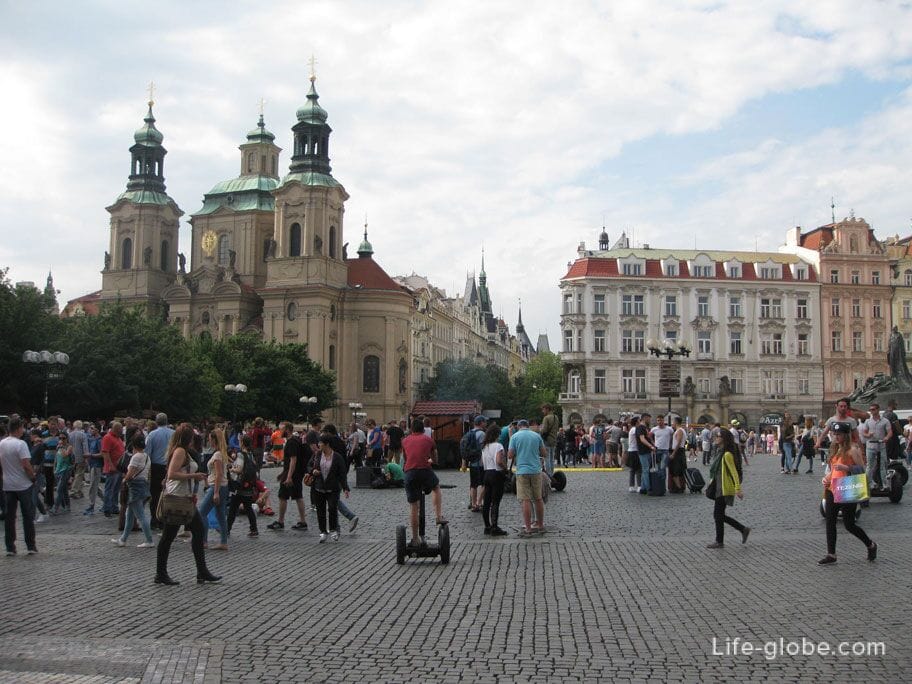
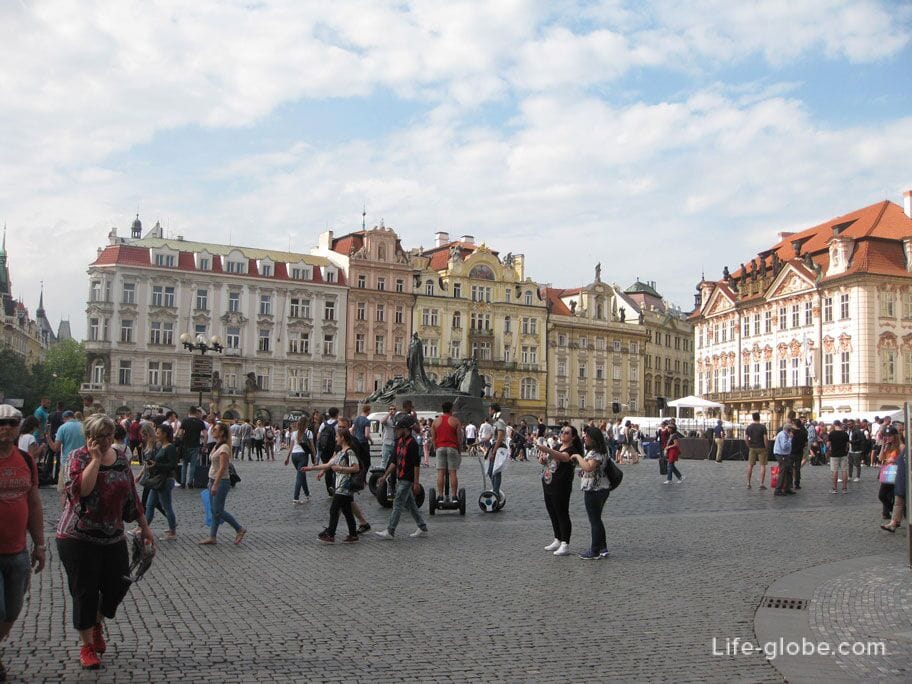

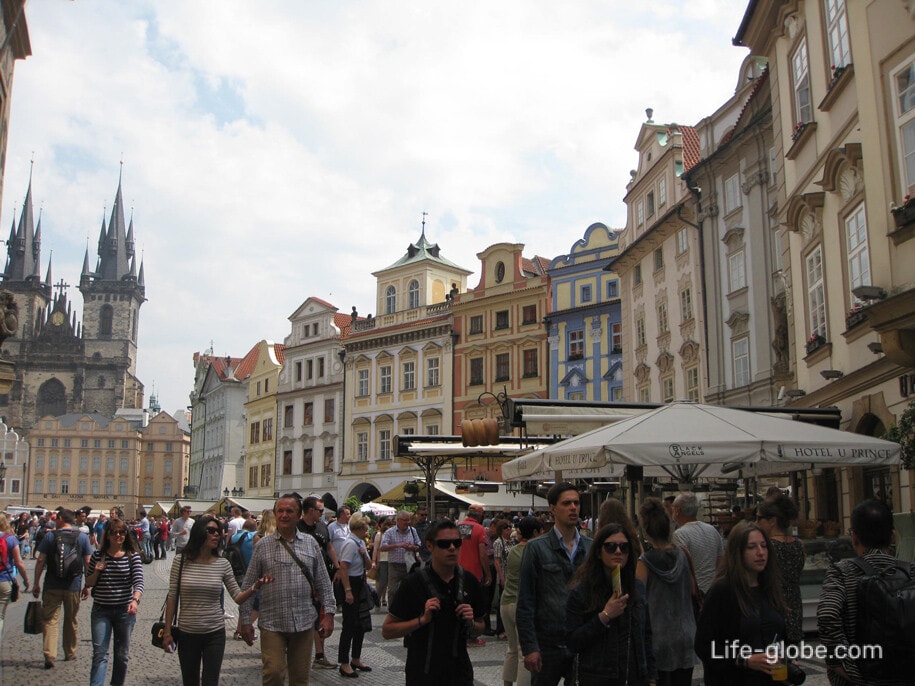
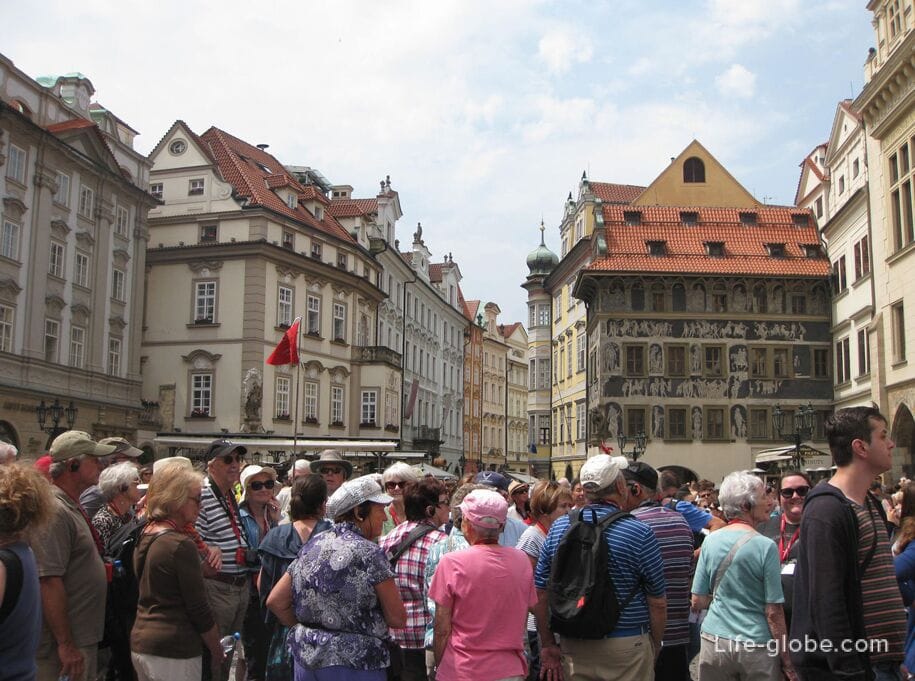
The square hosts festivals, festivals and bazaars, including the traditional Easter Christmas market. The Christmas Market on the Old Town Square is the main fair in Prague.
In addition to the days of fairs and holidays, tents are set up around the perimeter of the square, from which there is a lively trade in souvenirs and street food. From the tents with street food comes just an amazing smell of sweet trdeliki and smoked pork knee. It is simply impossible to pass by and not try these "goodies".
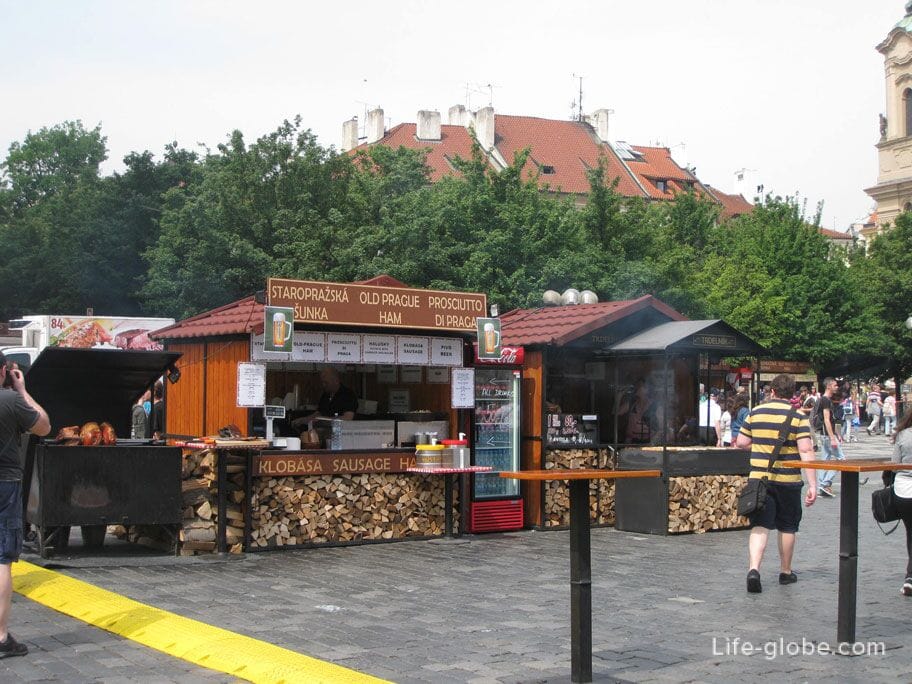
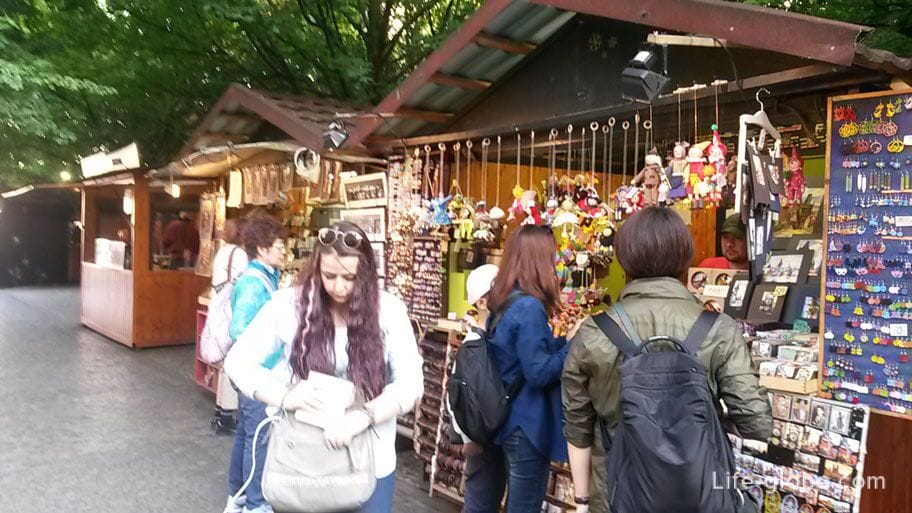
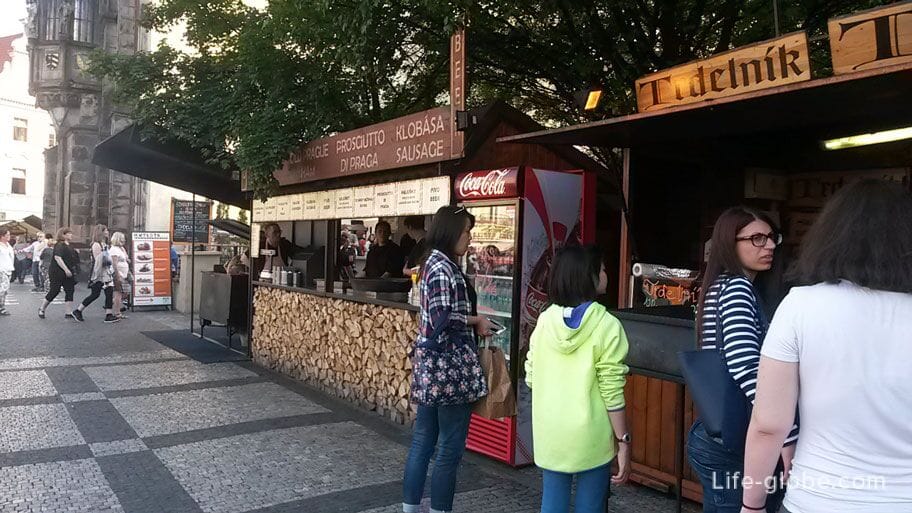
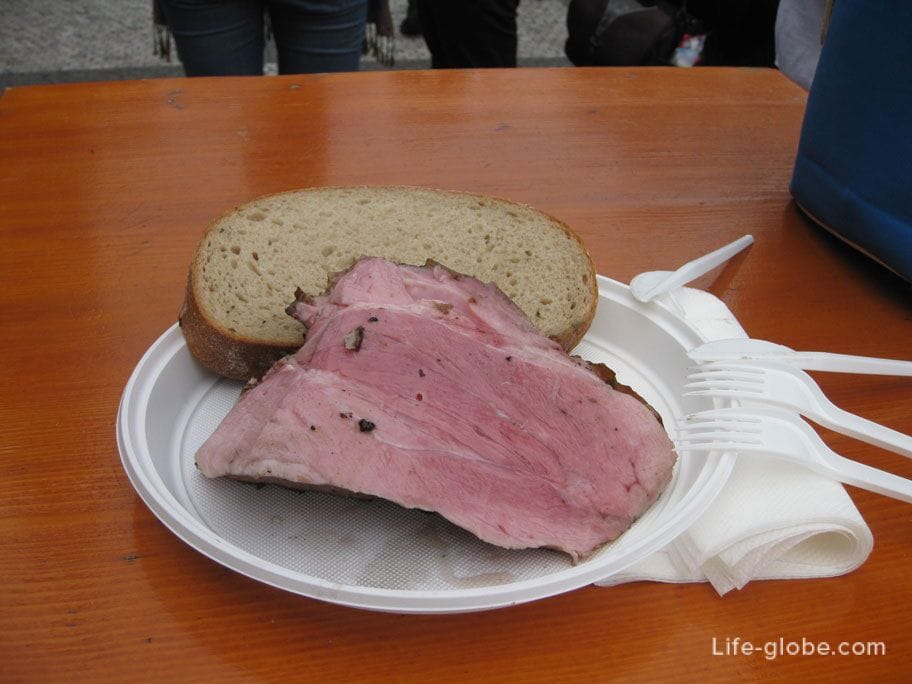
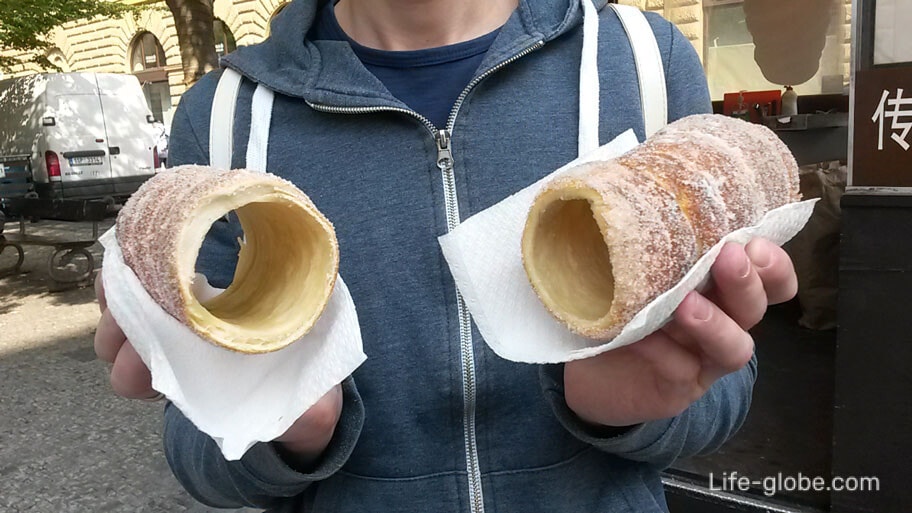
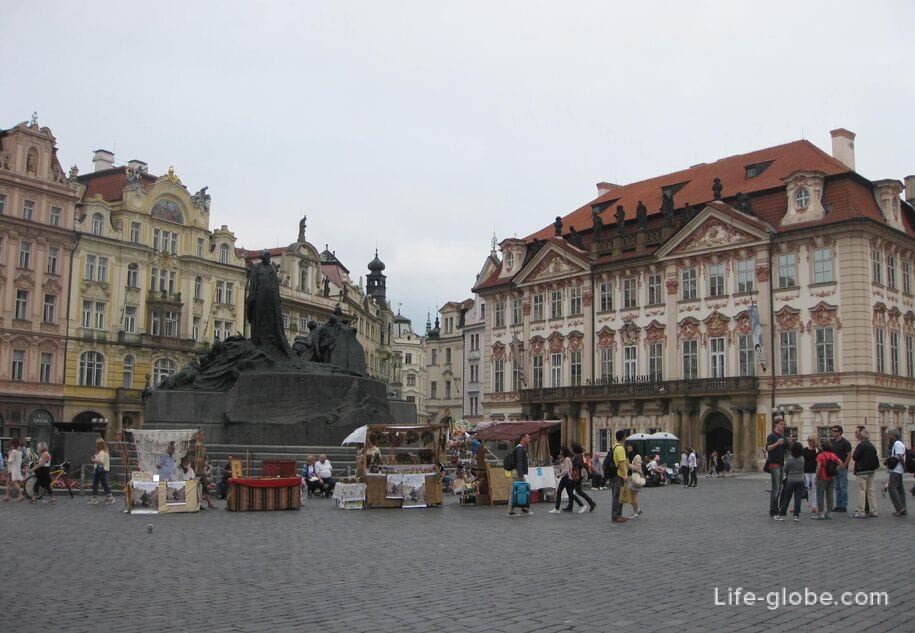
You can take a horse-drawn carriage ride around the Old Town Square and the Old Town of Prague. And street performers entertain honest people. All this together looks very festive and bright.
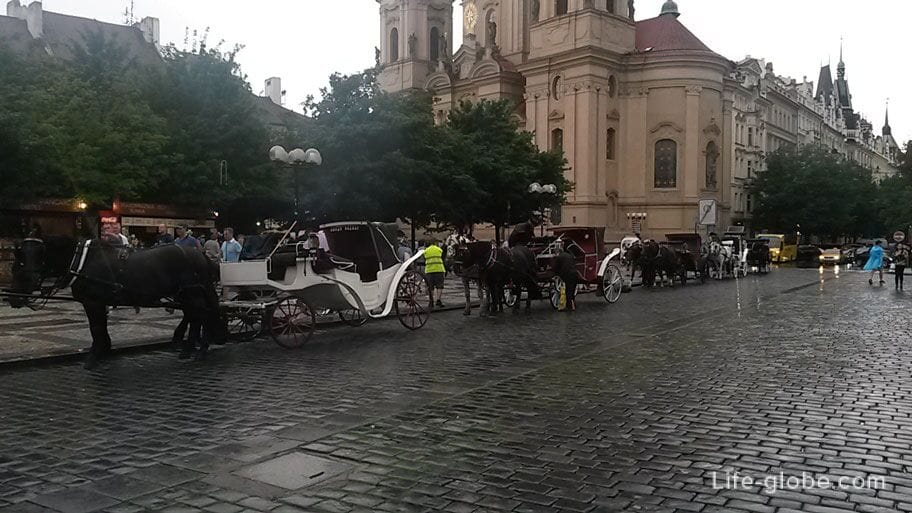
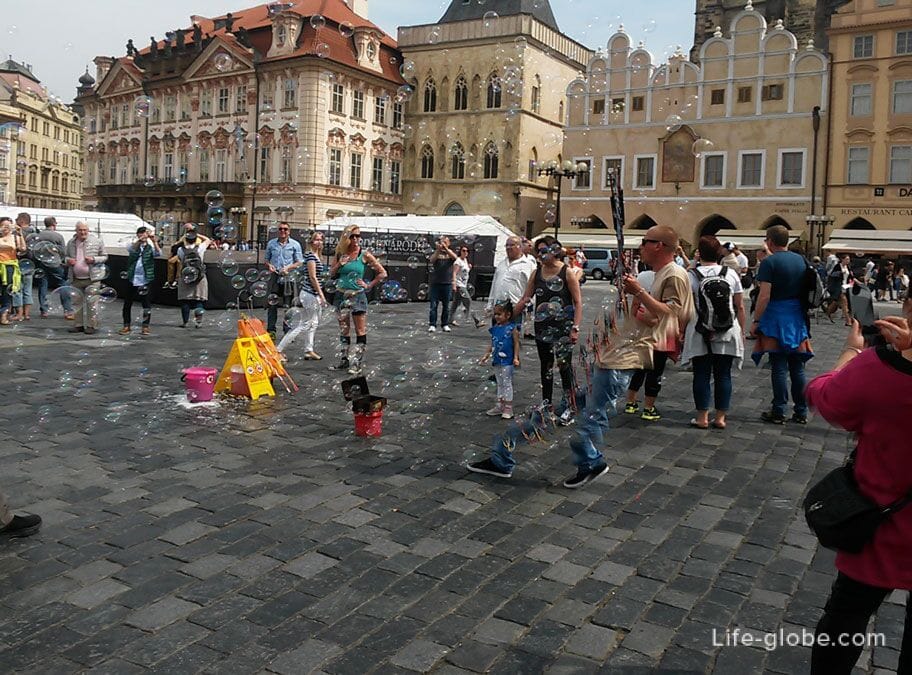
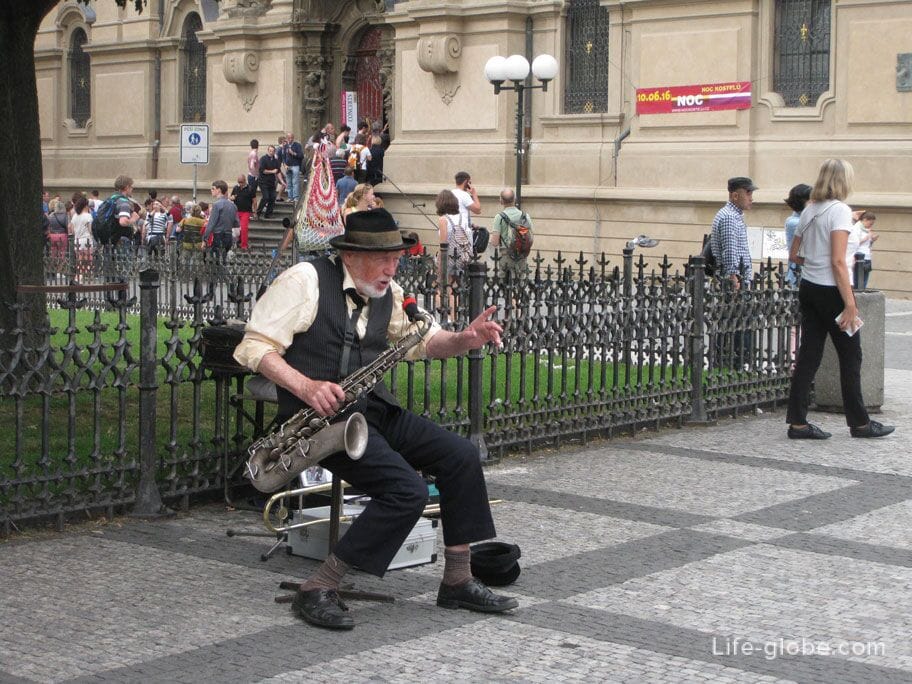
The central part of the Old Town Square is decorated with
The Prague Meridian (Pražský poledník, 14°25'17" east longitude), which runs along the ground (paving stones) through the Old Town Square and has historically been used to determine noon by the shadow of the Mariana Column.
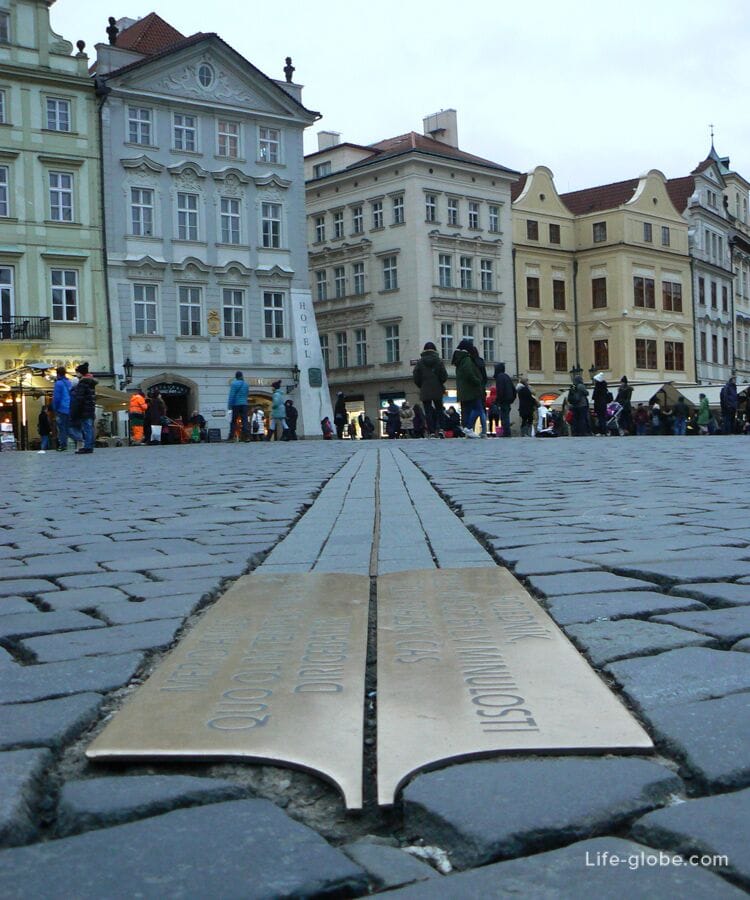
Mariana Column (Marianský sloup) in the early Baroque style, originally built in 1650 by Emperor Ferdinand III.
The Habsburgs modeled the columns in Munich (1638) and Vienna (1647) in gratitude to the Virgin Mary for protecting Prague from Swedish troops in 1648. Thus, it was the third oldest Marian Column in Europe.
In 1918, the Mariana Column was demolished by a group of Prague citizens as a symbol of the non-existent Austria-Hungary and the Habsburg rule. A copy of the column, created by sculptor Peter Vanya, was installed on the original site of the Old Town Square on June 4, 2020.
Like the original, the replica is made of sandstone. At the top of the column is a statue of the praying Virgin Mary Immaculate with a halo with 5 gilded stars. The imaculata stands on a dragon, which symbolizes sin, evil and suffering, from which the Virgin Mary protects.

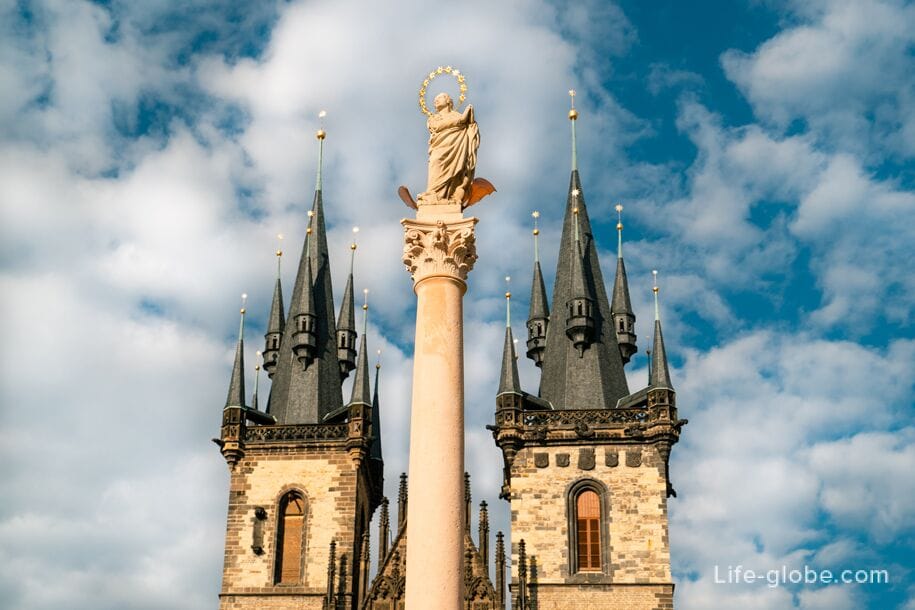
Monument to Jan Hus (Památník Jana Husa) is a monumental monument to the national hero Jan Husa, which is one of the most important symbolist works of Czech monumental sculpture in the Art Nouveau style.
The monument was created by Czech sculptor Ladislav Shaloun and opened in 1915.
The bronze monument is a sculptural group, the dominant of which is the image of Jan Hus in the center, whose gaze is turned towards the main Hussite church of the Virgin Mary in front of Tyn (Tyn Temple). Two groups of people are depicted near the Goose, some of which symbolize the Hussites - warriors with spears, and the other - modest exiles who left Bohemia after the battle of White Mountain in 1620. More about the monument to Jan Hus…
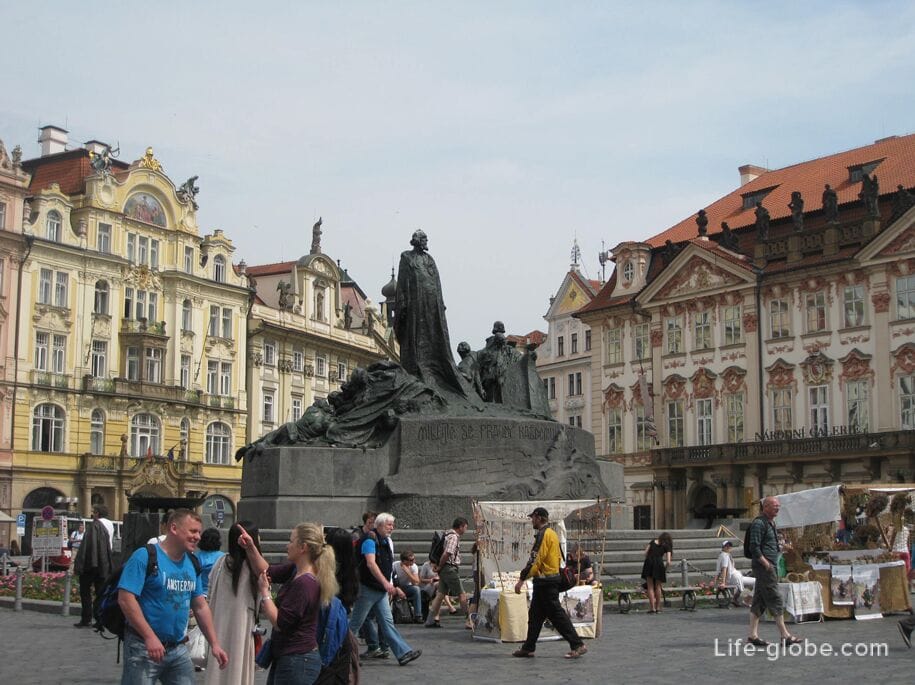
the main dominant of the Old Town Square is the Old Town Hall (Staroměstska radnice) with the famous Prague Astronomical Clock (Prazsky Orloj or staromestsky Orloj), showing the performance of the clock.
The Town Hall consists of an ensemble of different buildings in which you can visit the chapel with the mechanism of the Prague chimes, halls, dungeons and climb to the observation deck in the Town Hall Tower. More about the Old Town Hall…

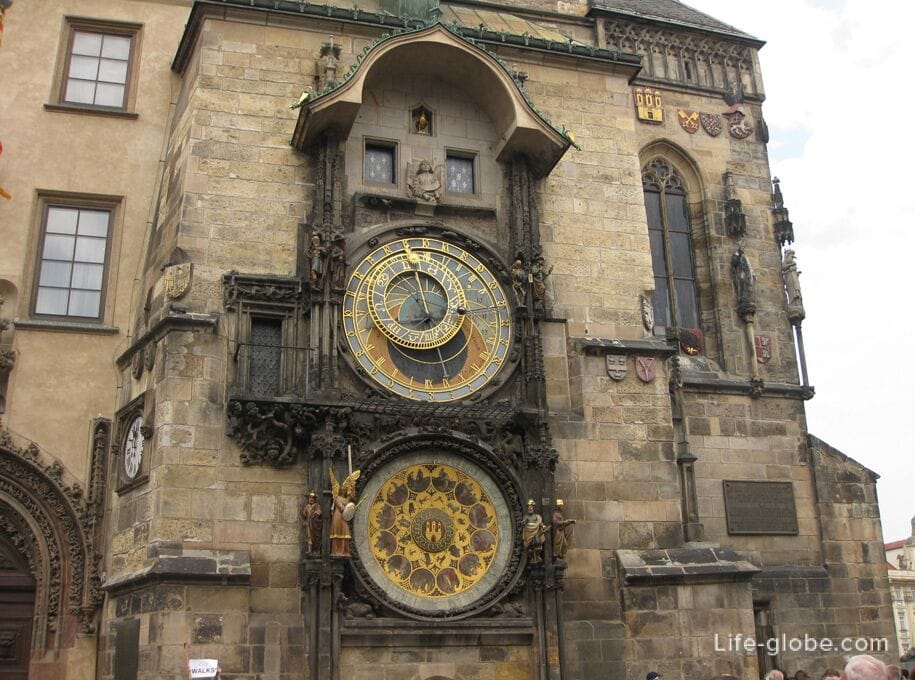
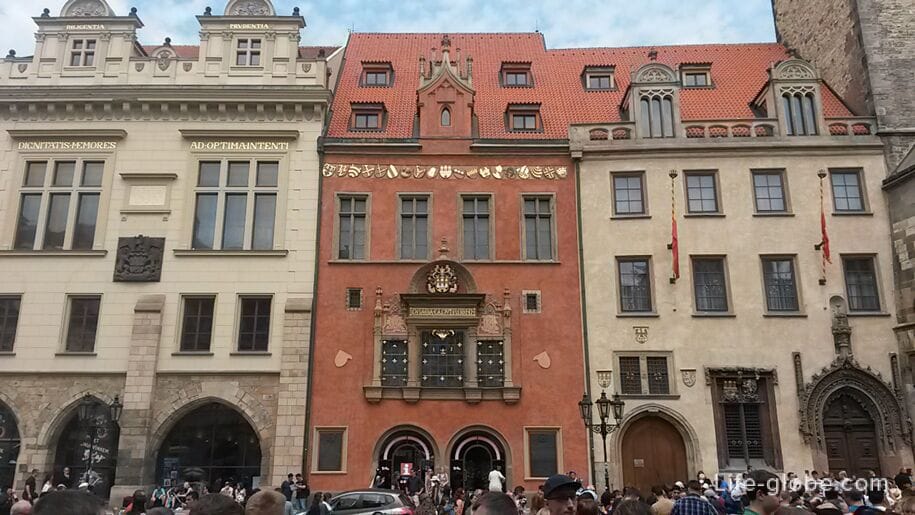
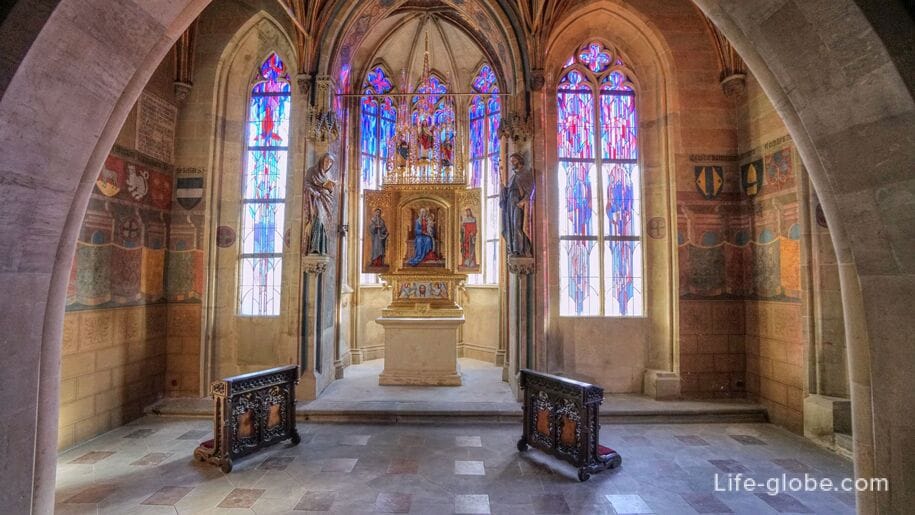
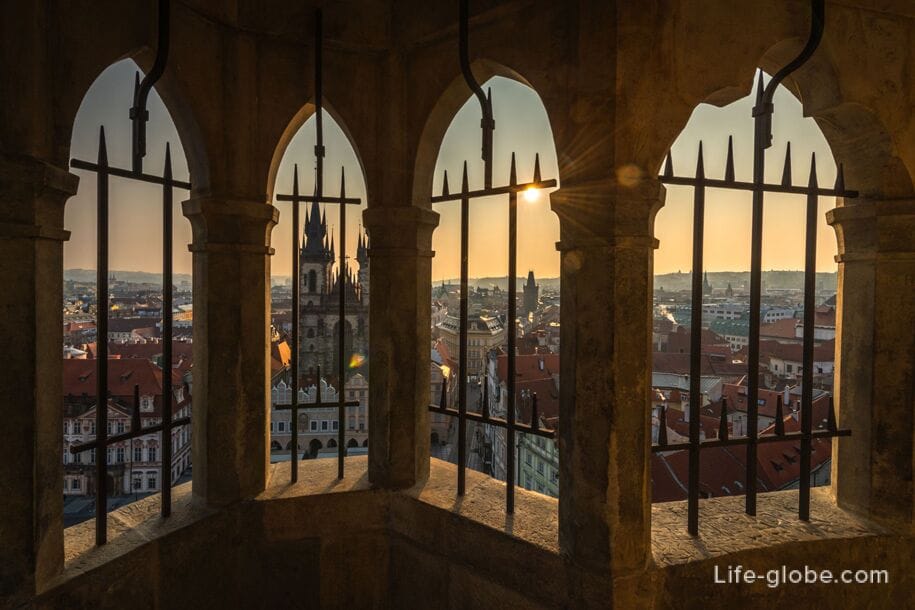
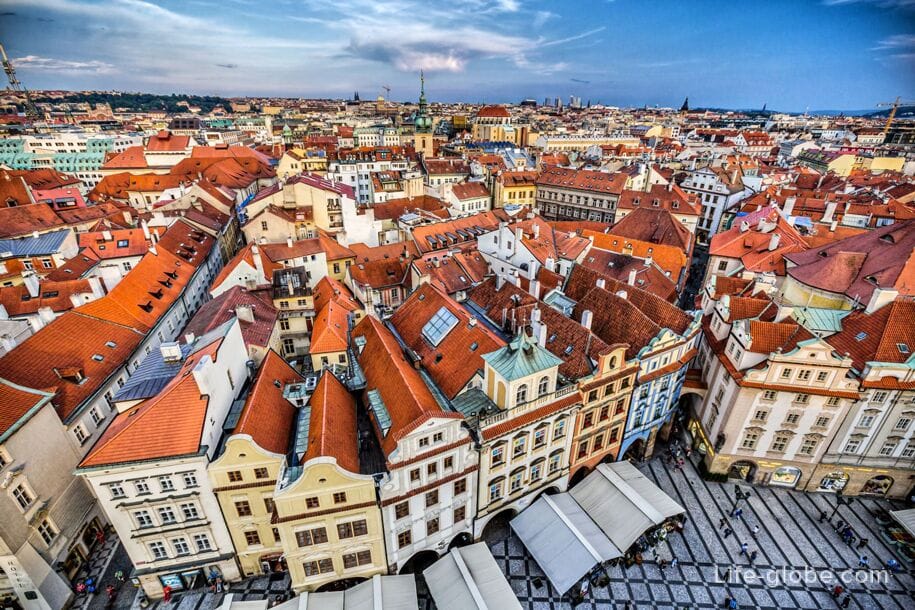
Tynsky Temple (Tynsky chram) is one of the most impressive Gothic sacred buildings in Prague.
The full name of the temple: the Church of the Virgin Mary in front of Tyn or the Church of Our Lady in front of Tyn (Kostel Matky Boží před Tynem).
The construction of the Tyn temple was started in the 14th century.
Today, this majestic Gothic structure stands out with two 80-meter towers, each of which ends with roof towers topped with eight smaller spires arranged in two rows of four.
From the side of the Old Town Square, the lower part of the Tyn Temple is covered with historical buildings: the Tyn School building (Týnská škola) and the Trcikov House "At the White Unicorn" (Dúm U Bílého jednorožce), in which cafes, restaurants and art gallery (Central Gallery).

The interior of the Tyn temple combines features of Gothic, Renaissance and, mainly, early Baroque.
The most interesting in the interior are the altar paintings of Karel Skreta and the tomb of astronomer Tikhon Brahe. More about the Tyn Temple…
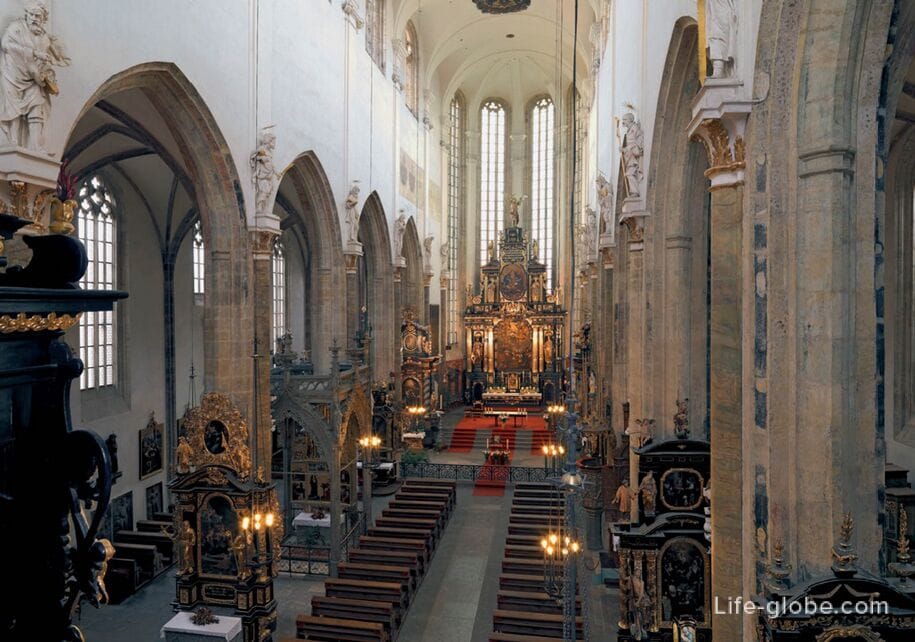
The Tyn temple has a former Tyn Yard or Ungelt (Týn, Ungelt) is a complex of historical buildings located between Týnská, Malá Štupartská and Štupartská streets.
In the early Middle Ages, the Tyn courtyard was a merchant center for visiting merchants, fortified with walls and a moat. It was necessary to pay for the protection, and a mandatory fee was formed from this fee. Since the 11th century, this place has been the center of international trade in Prague; all foreign traders and buyers who came to Prague had to gather here. In addition to the customs office, there was a church and a hospital in the Tyn courtyard.
Among the complex of 18 houses, the former Renaissance Palace of the Granovskys (Palác Granovských) stands out with arcaded galleries at the level of the first and second floors of the courtyard facade.
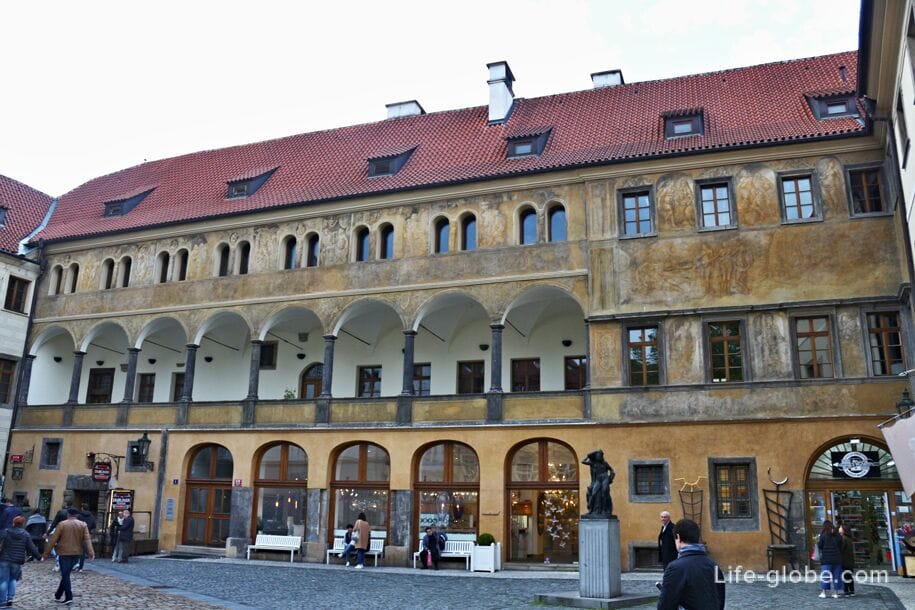
The Church of St. Nicholas or the Church of St. Mikulash (Kostel sv. Mikulaše) is an instant church in the Baroque style.
The main facade of the church with the main portal and two bell towers faces south and has sculptures by Antonin Brown in its design: statues of saints and Czech patrons, allegories of the Old and New Testaments and allegories of Faith, Hope, Love and Abstinence.
Between the two towers, a central dome with a lantern stretches to the sky.
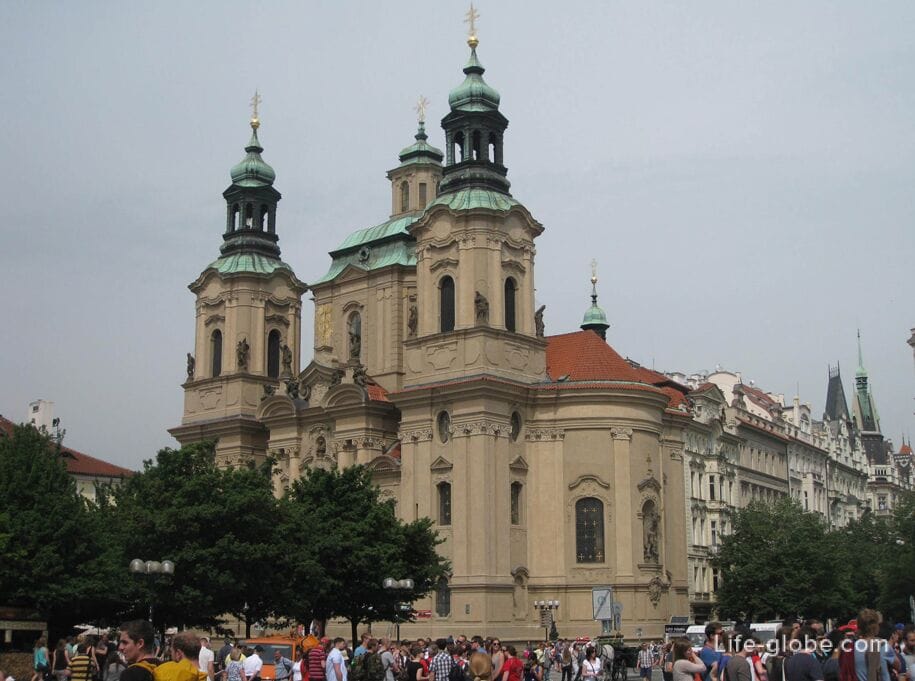

The interior of the church is decorated with gilding, sculptural elements, sculptures, paintings, frescoes and stained glass windows.
One of the main attractions of the church is a large crown chandelier (horos) with crystal ornaments. This chandelier was donated to the church by the Russian Emperor Alexander II.
There are good acoustics in the walls of the church and concerts, including organ music, as well as divine services are held there. More about St. Nicholas Church…

Opposite the central entrance to the Church of St. Nicholas is a green area - park near the Old Town Square (Park u Staroměstského náměstí) with benches for recreation, around which several cafes with open terraces are concentrated.

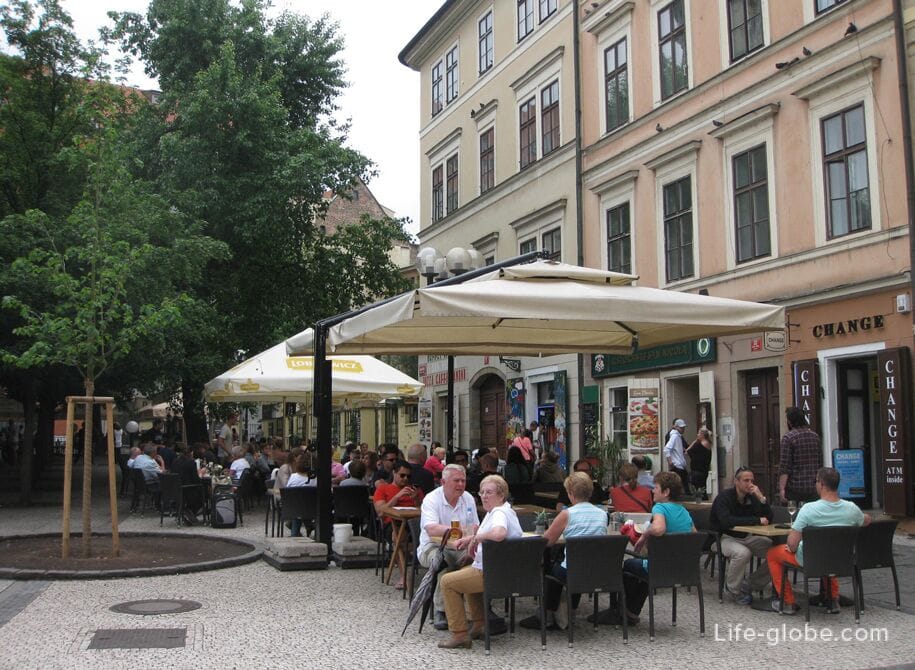
The Palace of the Kinskys (Palac Kinskyc), leading the history since 1765, is one of the decorations of Prague.
Its main facade faces the Old Town Square and is made in Rococo style with rich stucco and sculptural decor.

A bookstore is open in the palace, an information center is functioning The National Gallery Prague (Narodní galerie Praha), has offices, a cafe and a museum shop.
A space for exhibitions is allocated in the front wing. The walls of the palace house the exposition of the National Gallery, where masterpieces from the Renaissance to conceptualism of the 21st century are exhibited. More about the Kinsky Palace…
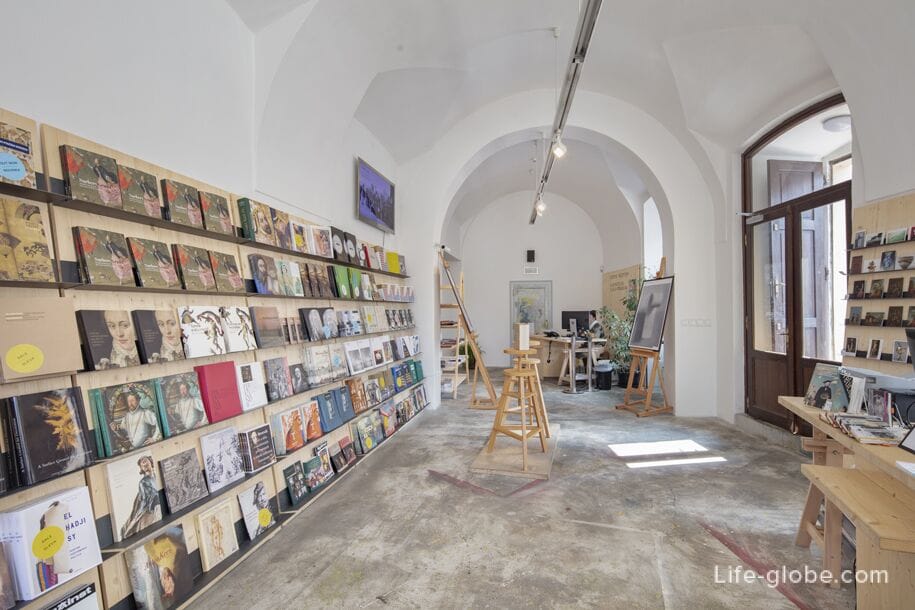
The Kinski Palace is adjacent to a small building - the house "At the stone bell" or the house "At the White bell" (D?M U Kamenného zvonu), which is one of the most valuable Gothic monuments of the city.
It is one of the oldest (13th-14th centuries) and the most remarkable monuments of Prague, which is an extraordinary Gothic palace architecture of the tower type.
The name of the house "At the white bell" or "At the stone bell" (U Bílého, Kamenného zvonu) was first mentioned in 1417 and comes from a stone bell, a copy of which is located on the corner of the house.

Today the house at the stone bell serves as an exhibition space Galleries of the capital city of Prague (Galerie hlavního města Prahy) - various thematic exhibitions are held in the building.
The original Gothic chapel is also open to the public in the building and there is a concert hall on the 3rd floor.
In addition, the house has a book and catalog store, and there is a cafe at the back of the building. More about the house at the stone bell…


The house "At the Minute" is an exquisite building, which is a typical example of the architecture of the Czech bourgeois Renaissance.
The house "At the minute" is difficult not to notice, because it stands out from the buildings of the surrounding ensemble, since its facade is dotted with ornaments-sgraffito. Sgraffito represent the wealth of the Renaissance and depict biblical and mythological scenes, as well as the plots of modern Renaissance legends and historical important personalities.
The building is also known as the White Lion House. The name of the White Lion was due to the fact that since the end of the 18th century there has been a stone statue of a white lion in the classical style as a sign of the house here. The lion sculpture still adorns the corner of the house today.
The house is also famous for the fact that a writer lived in it from 1889 to 1896 Franz Kafka with his parents.
Today, the restaurant "At the Minute" is located on the ground floor of the building. More about the house "At the minute"…
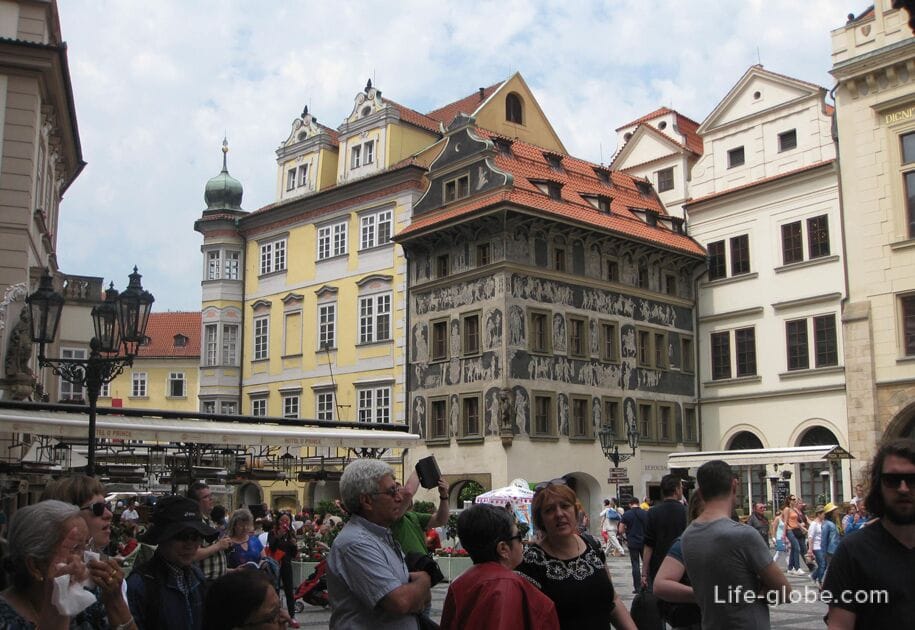

The building "At the Prince" or the house of the golden angel, the house of the black angel (U Prince, Dům U Zlatého anděla, U Černého anděla) is a baroque house that has acquired its current dimensions and appearance since 1887.
The building has a bay window over the entrance portal and a cartouche with the image of an angel.
Today the house is located 5-star Hotel U Prince with bar and free Wi-Fi-Fi. Breakfast may be included in the room rate. Link to the hotel
On the roof of the hotel (house) there is a restaurant "Terasa U Prince", from the terrace of which there are views of the Old Town Square. The terrace is partially covered and heated, open all year round. The restaurant serves traditional Czech and international cuisine.
Address of the house: Staroměstské náměstí 29, 110 00 Praha 1 - Staré Město.

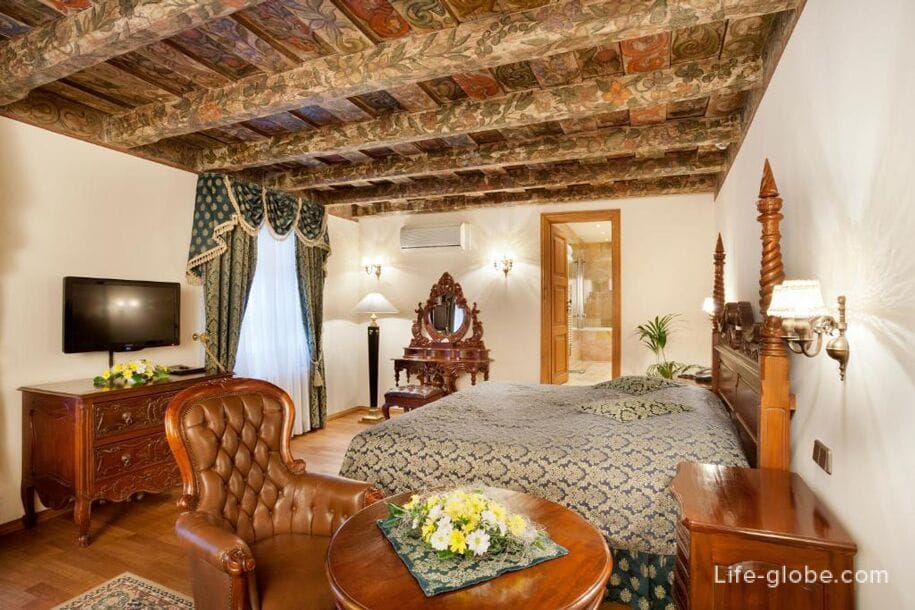
In addition to those listed above, there are other buildings along the perimeter of the Old Town Square, which also have bright facades with decorations, and have fabulous names.
So, there are houses: "At the Oxen", "Red Fox", "Storks", "At the stone table", "At the Golden camel", "At the Stone Lamb", "Golden Cross", "At the elephant", etc.
And yet, it is better to admire the beautiful architecture of the houses of the Old Town Square in the complex of building facades - so the impressions are stronger.
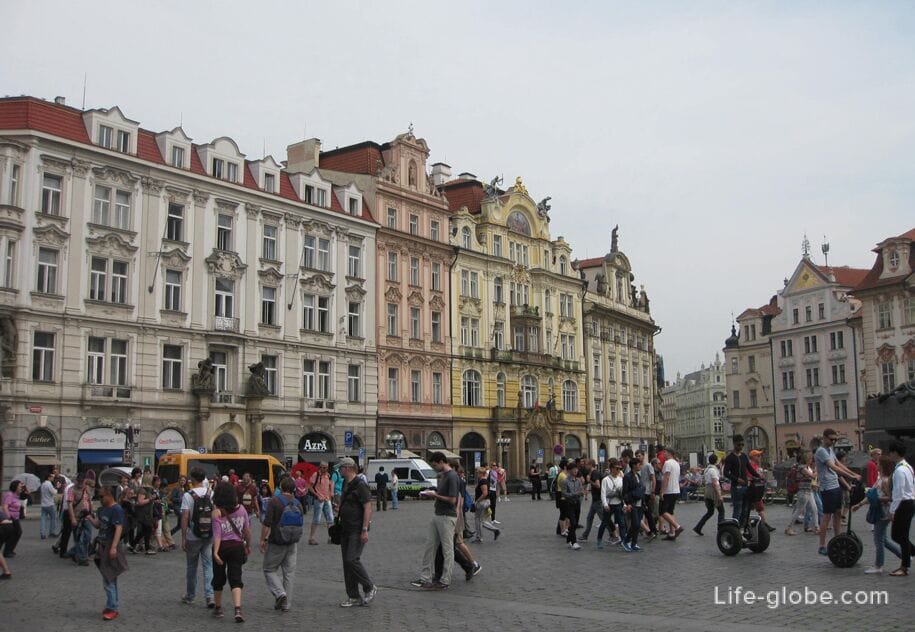
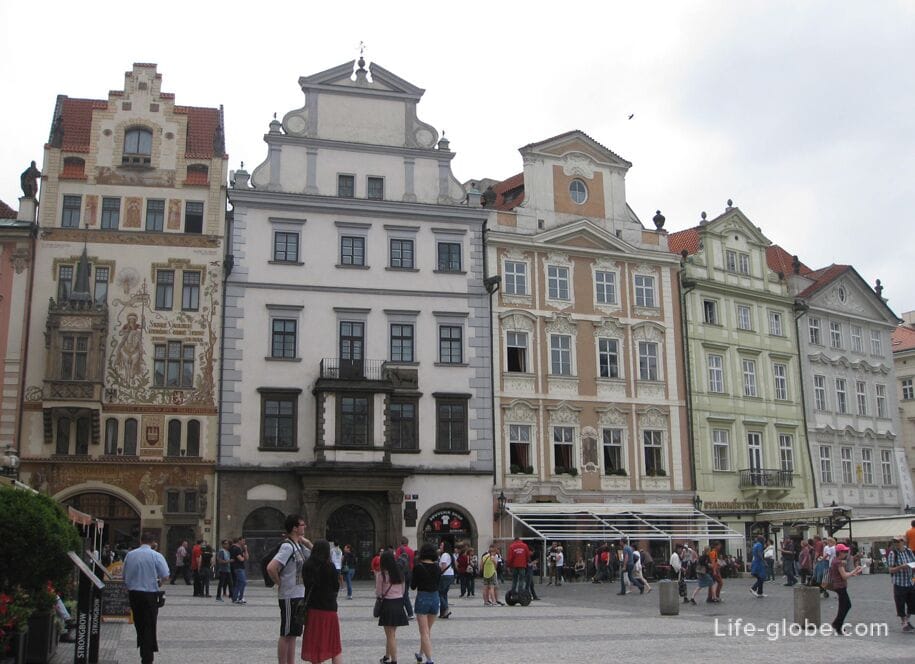
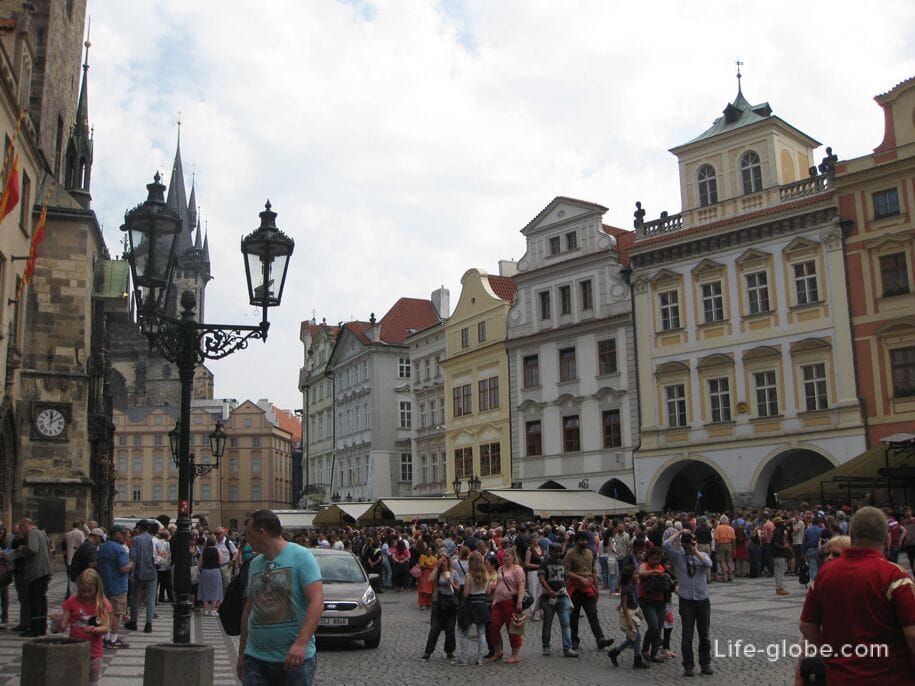

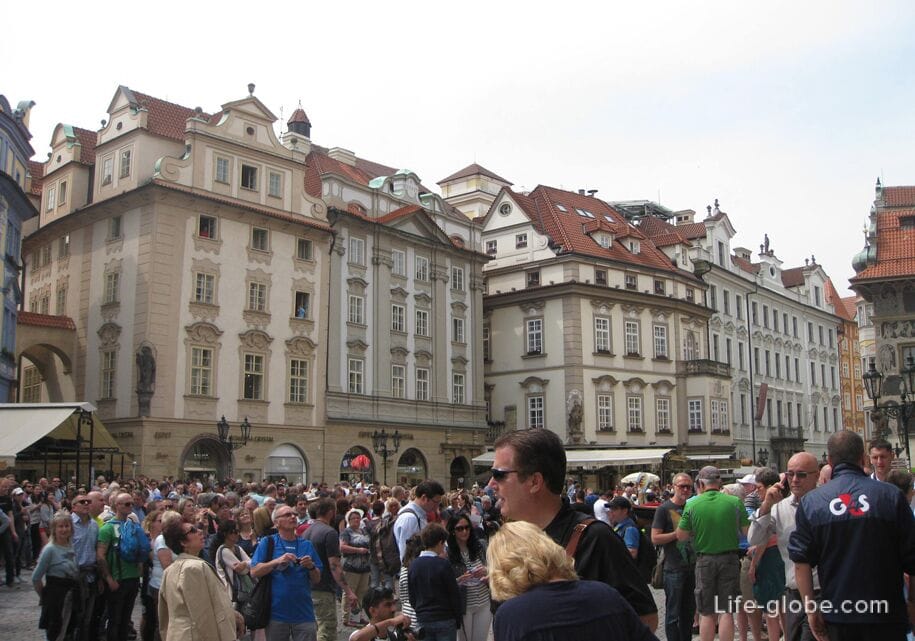
The Old Town Square is part of the Royal Way (Královská cesta) - the name of the historical route in Prague, along which future Czech kings passed to the coronation, and today this way is a popular tourist route of Prague.
The tradition of the Royal Way was established by Emperor Charles IV.
The route passes through the central historical part of Prague and leads from Republic square (Namesti Republiky) in Prague Castle (Pražský hrad). More about the Royal Way…

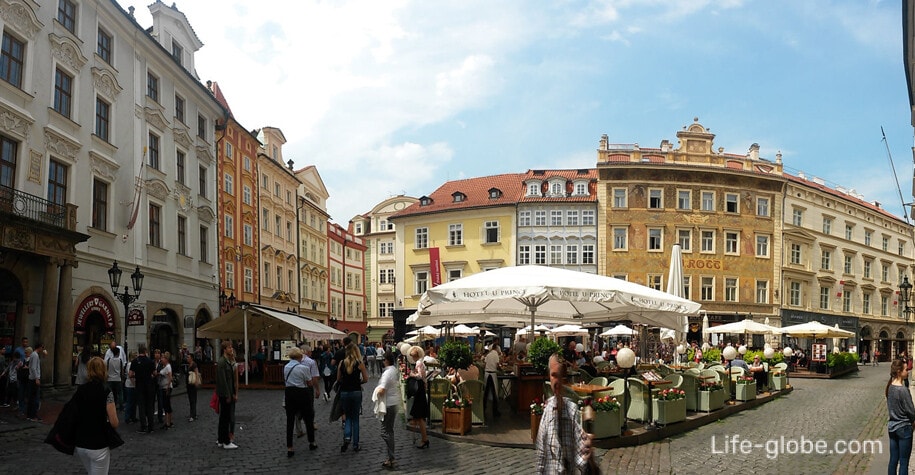

All accommodation facilities in Prague (hotels, apartments, guest houses, etc.), including on and near the Old Town Square, in the historical center of the city and more remotely from those, can be view and book here